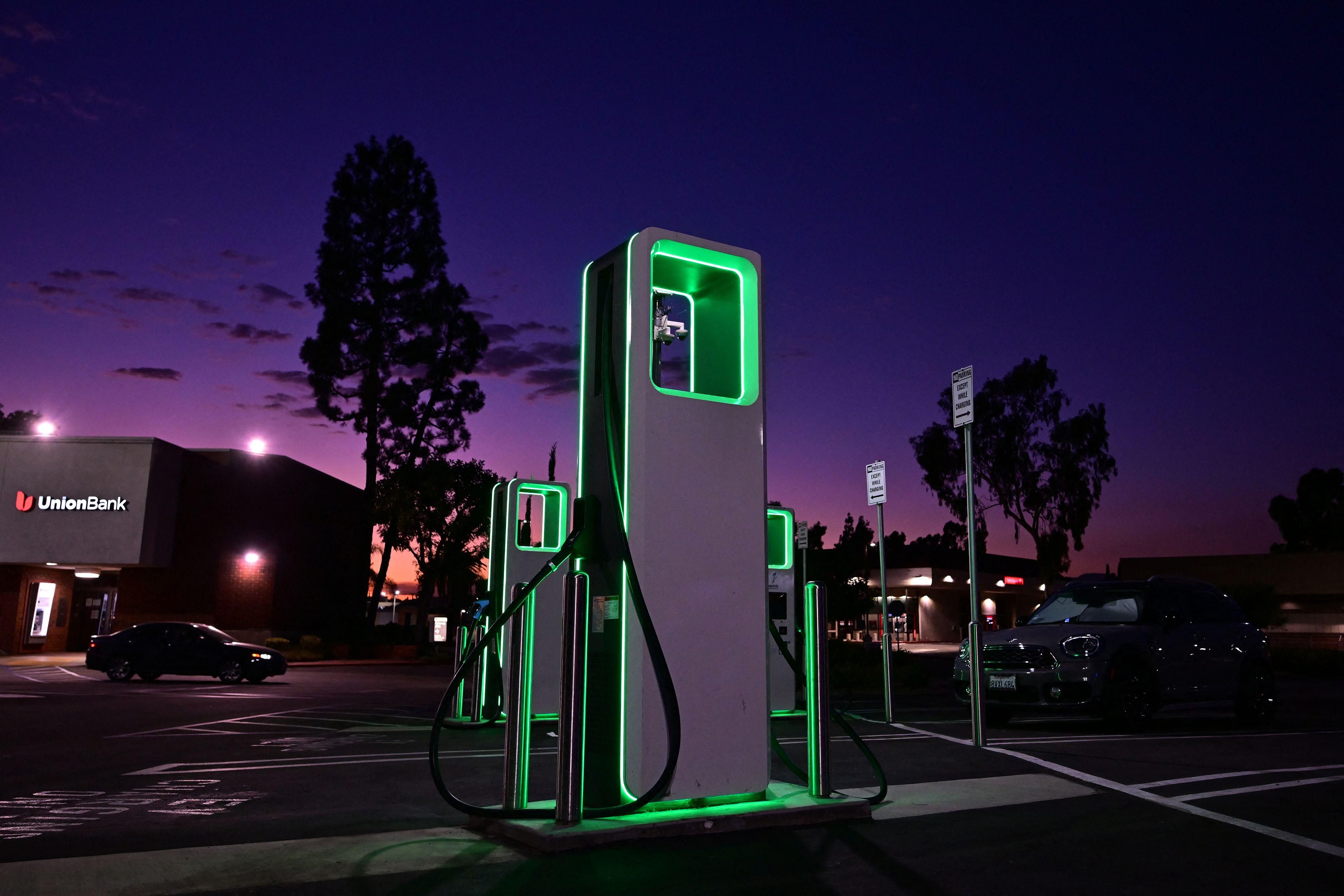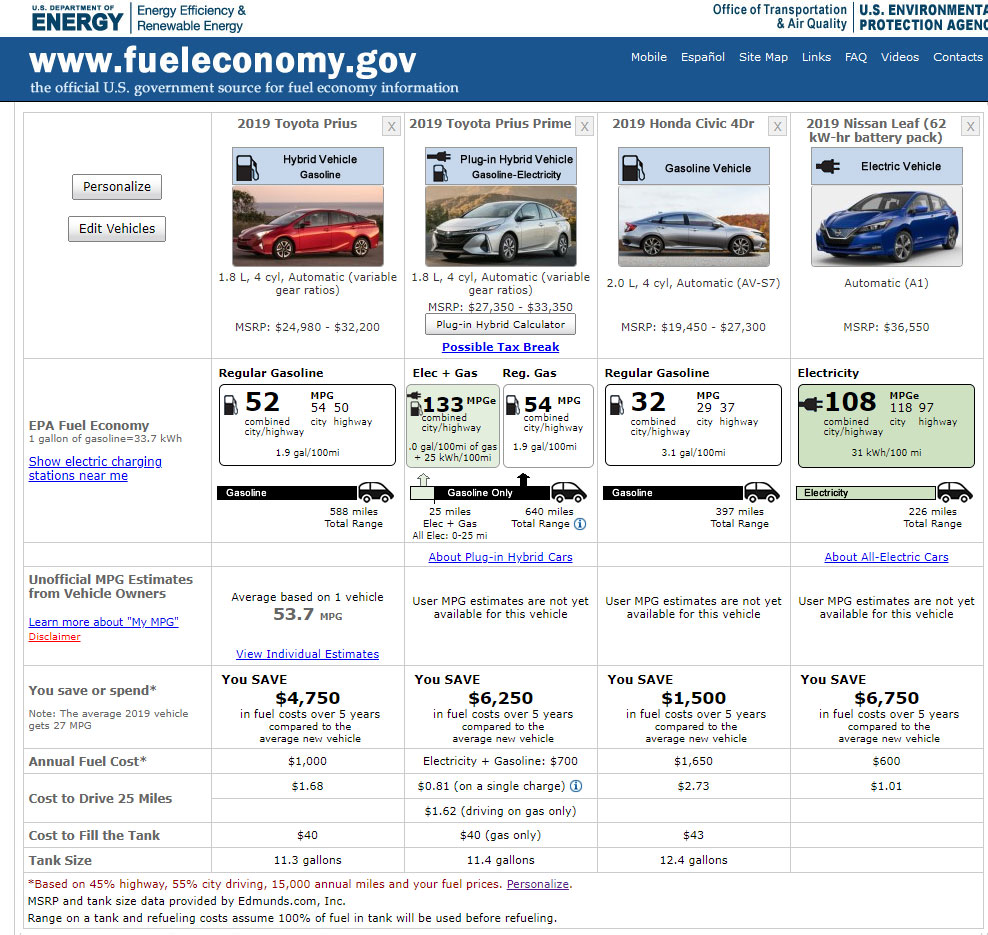Electric or gas? It’s the clash of the automotive titans, where silicon chips meet internal combustion. In one corner, we have the silent hum of efficiency; in the other, the throaty growl of tradition. This article will dissect the two giants, comparing costs, efficiency and performance. We’ll see if the shiny new world of electric cars can truly tussle with the muscle of its petrol-powered contenders. If you’re still parked on the fence, perhaps this in-depth analysis can help steer your decision. So, strap yourself in — it’s time to put pedal to the metal and dish the dirt.
Understanding Electric Cars

Electric cars, also referred to as battery-electric vehicles (BEVs) or just EVs, come with some intrinsic technological factors that make them distinct from their gasoline counterparts. At first glance, electric cars may seem like a radical departure from the norm, but in essence, they are simple. Instead of an internal combustion engine under the hood, there’s an electric motor powered by a large battery pack. When it comes to refuelling, instead of pulling up at the local filling station and fill the tank with petrol or diesel, you plug it into a charging point to refill the battery, as you would a mobile phone.
On the road, electric cars offer instant torque. This translates to rapid acceleration at any speed. There are no delay, no requirement for the engine speed to catch up. This attribute gives electric cars a remarkable zip in city driving, making them quick off the line at traffic lights, and brilliant when overtaking on the open road.
The batteries in an electric car are not only used to power the engine. They also provide juice for everything else – from the headlights to the hi-fi, to the heating and air conditioning. Another cool feature about electric cars is that they waste much less energy. While a conventional car can be hopelessly inefficient – with up to 80% of energy lost as heat – an EV is around 95% efficient.
Perhaps the most noticeable difference for users is the silence. Electric motors are very quiet, which reduces noise pollution – a significant bonus in urban areas. Lastly, while driving an electric car, one experiences something called regenerative braking. The process turns your electric motor into a generator when you lift off the accelerator, which slows the car and charges the battery all in one go.
So, in essence, electric cars trade fuel for electrons. They offer a significantly different driving experience that’s smooth, quiet, and surprisingly brisk. For all their high-tech allure, they’re uncomplicated beasts – plug-in, drive, plug-out, repeat. Low running costs, significantly reduced emissions, and a novel driving experience make them a compelling proposition for the future of transport.
Understanding Traditional Gasoline Vehicles

Traditional gasoline vehicles, the erstwhile kings of the road, operate on a principle of internal combustion – hence the term ‘Internal Combustion Engine’ or ICE. The machinations of this system are a veritable symphony of precision engineering. Unlike electric vehicles, gasoline cars require vast amounts of air to mix with fuel in its combustion chambers. Once ignited, it releases energy that’s transformed into motion.
Most gasoline vehicles are characterized by a multi-speed transmission system, a component absent in EVs. This system’s function is nothing short of miraculous, transforming the high-speed low-torque output of the engine into a slower, but more beneficial, high-torque output for the wheels – while all the time shifting gears to find the ideal compromise between power and fuel economy.
In terms of energy storage, gasoline vehicles usually carry enough fuel for between 300 and 400 miles of driving, although this number can augment depending on the efficiency of the engine and the size of the fuel tank. Unlike electric vehicles, refuelling an ICE car is done in a matter of minutes. This often overlooked factor has served as the bedrock of our automotive culture, a culture of freedom and flexibility, where the open road awaits and the only limit is the horizon.
One thing that often evokes fond memories for many people is the classic soundtrack of a gasoline car. The throaty roar of a high-performance engine, the purr of a carefully-tuned motor, or the staccato rhythm of a working car’s exhaust are sounds deeply ingrained into automotive folklore.
Although they’ve been around for longer and are mired in tradition, gasoline vehicles are no less intricate than their battery-powered counterparts. The mind-bending engineering in these vehicles is epitomized by concepts such as variable valve timing, turbocharging, cylinder deactivation, and active aerodynamics. These innovations may not be as highly publicized as those in the EV world, but make no mistake – they’re just as technologically potent.
It’s important to remember, there’s a romance and a complexity to gasoline vehicles. They’re raw, visceral, and, in many ways, still maintain that irreplaceable human element. From the awe-inspiring world of motorsport to a parent teaching their child how to change oil, the gasoline car has fashioned a veritable patchwork of memories, connotations, and emotions that are deeply ingrained into our society.
However, even as this automotive anachronism faces the inevitable tide of advancement, the fact remains – to fully understand our mobility future, we must first appreciate our petrol-driven past.
Comparing the Costs

Crunching the numbers is often the weighty factor that influences most car buyers. As we gear-shift into this part of our comparative journey, it’s vital to know the distinction between sticker price and total cost of ownership. At first glance, the initial purchase prices of electric vehicles (EVs) generally appear higher than their gas-guzzling counterparts. Yet, be prepared to pull over and assess an important roadside sign – “Here Lies Hidden Savings.”
EVs have less mechanical complexity compared to traditional vehicles, translating to fewer maintenance costs because frankly, there is less that can go wrong. Think no more oil changes; now that’s a pit stop you’ll appreciate avoiding! The cost of power is also a significant saving. Electricity costs are not only lower than gasoline but usually more stable. Not having to grimace at gas station price boards every day can be a nice perk.
However, EVs do come with their own expenses. Replacing an EV’s battery can be pricey, albeit it’s an infrequent cost. Plus, if you don’t have your own garage or you’re an apartment dweller, you might need to consider the costs of installing a home charging system or the charges from public charging stations.
Meanwhile, traditional gas vehicles, while cheaper upfront, gulp down gas money consistently which accumulates over time. Routine maintenance costs can also be higher, with oil changes, transmission services, and the myriad of belts and filters that require regular replacement.
To look at it in the rear-view mirror, it’s imperative to remember that this is not just a simple ledger balance exercise. There are potential savings to be made going electric both in the short or long run, but specific factors, such as personal driving habits, the length of ownership, local fuel and electricity rates, potentially lower insurance costs, and even government incentives, can steer the cost-benefit analysis in a decidedly eco-friendly direction. Don’t rush over the speed bumps on the way to your buying decision. Consider the costs, they might not be as they first appear in the headlights.
Assessing Efficiency

In the electrified landscape of transportation, efficiencies are generally measured in MPGe, or miles per gallon equivalent, to create a side-by-side comparison with their gasoline counterparts. Significant differences between the two frameworks arise due to diverse power generation approaches.
Traditional internal combustion engine (ICE) vehicles operate on a relatively simple principle: the ignition of gasoline within the engine creates a powerful explosion which drives the mechanical action of the vehicle. However, this process is not optimally efficient. Much of the energy derived from burning gasoline is lost- only about 17-21% is ultimately used to propel the vehicle, the remainder dissipating as heat, or used in auxiliary systems like air conditioner compressor, power steering, alternator, etc.
Electric cars, on the other hand, work on a more direct method of energy conversion. Electricity from the battery is used to excite an electric motor that turns the wheels, a system that can be up to 90% energy efficient, with less energy lost as heat. The energy for this electricity can be derived from a myriad of sources, some cleaner and therefore ‘efficient’ in a broader environmental sense, than others.
Importantly, the metric of efficiency isn’t solely about the distance traveled per unit of energy. In the realm of electric vehicles, the source of the electricity greatly impacts the overall carbon efficiency. An electric car powered by a coal-based grid might produce more lifecycle greenhouse gas emissions than a gasoline vehicle, even though it’s three times more ‘energy-efficient.’ Conversely, if the source of power is renewable, like hydro, solar, or wind may tip the efficiencies in the favor of electric vehicles.
While we’re discussing efficiencies, let’s not miss out on regenerative braking—an exclusive smart-feature of electric cars, where the vehicle captures and converts energy during braking into electric energy and stores it in the battery. This ‘recycled’ energy then increases the overall efficiency of the vehicle, thereby contributing to potential cost savings over time.
So, while the electric car may be king in the direct channeling of energy to motion, the overall efficiency contest is more nuanced, taking into account factors like production, energy extraction methods, and even geography.
Analysing Performance

Switching gears to performance analysis, we traverse the mountainous terrain where gas cars have traditionally planted their conquest flags, confidently revving their engines. But the rise of electric vehicles (EVs) has introduced a quiet, yet powerful, contender in this basin. Let’s delve into it.
Make no mistake, traditionally, performance has always been the dominion of the big fuel-engine beasts. The raw power, the untamed torque, and let’s not forget that grunt. But this is not your father’s motorcade. EVs bring an entirely new definition of performance.
For starters, acceleration might be the most noticeable difference. Make no mistake, EVs can give you an adrenaline shot without the aid of adrenal glands. Engines that go from 0-60 in less time than it takes to read this sentence. That’s because electric motors deliver their torque immediately, providing acceleration right off the line.
As far as handling is concerned, many EVs benefit architecturally from their battery packs, which are typically wide, flat, and installed underneath the vehicle, resulting in a low center of gravity. This does mean that corners will be a whole lot more sporty than what you might be used to with gas-guzzlers.
Speaking of agility, let’s touch on the regenerative braking system, a common equipment in EVs, which captures and converts energy during deceleration into electricity, giving the vehicle surprising nimble characteristics.
On to endurance; traditionally, the domain of gas-fueled giants, the advent of fast-charging tech, increasing battery capacity, and expansion of charging infrastructure means that EVs are rapidly closing the gap in the range department.
Maintenance can be considered part of performance too, because a vehicle can be a beautiful swan on paper, but if it spends half its life on a hydraulic lift in a garage, then what’s the point? Electric vehicles come out strong here, being generally easier and less costly to take care of, simply because they have fewer moving parts. But regardless, keep in mind that routine maintenance, like tire rotations and replacing brake fluid and coolant, is still essential.
Finally, let’s discuss noise performance. Gone are the days of growling engines and gnashing gears. EVs are remarkably quiet, providing a smooth, zen driving experience. It’s the difference between conducting a symphony and striking a gong.
In conclusion, raw performance might have been the last refuge of the gasoline beast: the last hill on which it stood defiantly, flipping the bird at the incoming onslaught of electric knights. This hill, as it turns out, isn’t just being seized; it’s being reforged. Performance is no longer just about raw power but instead a nuanced and balanced soup of attributes. And by that measure, EVs deliver shockingly well.
Advantages and Disadvantages

To give a balanced view, let’s delve into some merits and shortcomings of both electric and traditional gasoline vehicles.
Starting with electric cars, their top advantage is, undoubtedly, the eco-friendliness. They are emission-free at the tailpipe, contributing significantly less to air pollution and greenhouse gas emissions. Beyond environmental considerations, electric cars also bring monetary savings in the long run. With fewer moving parts than conventional vehicles, they typically have lower maintenance costs. Furthermore, with no trips to the gas station and lower cost per mile, owners can save a significant amount on their fuel budget.
However, electric vehicles also come with downsides. Initial purchase costs for EVs tend to be higher than traditional cars, an obstacle for many potential buyers. Additionally, range limitations and long recharge times can be a concern, making long-distance travel or spontaneous trips a challenging endeavor. One more drawback is limited charging infrastructure, especially in rural or underdeveloped regions, which can cause inconvenience for EV owners.
On the other hand, traditional gasoline vehicles have their own set of benefits. They generally have longer range capabilities and refueling is quicker and easier, thanks to a mature and widespread infrastructure for gasoline refueling. Plus, they tend to have a larger model variety, giving consumers more options to suit their tastes and needs.
The weaknesses of gasoline vehicles, nonetheless, are not to be overlooked. They are the larger contributors to air pollution and the greenhouse effect, as they emit carbon dioxide and other harmful gases while running. High fuel costs are another factor to consider, not to mention the continuous maintenance needs due to the numerous complex components of the internal combustion engine.
Clearly, both types of vehicles have their strengths and weaknesses. The choice between them revolves around the individual needs and preferences of users, taking into account their commute habits, budget, and concern for the environment. Keeping these benefits and drawbacks in mind can aid consumers in making an informed decision that works best for them.
FAQs
🔌 How do electric cars compare to traditional gasoline vehicles in terms of costs?
⚡ What about efficiency, how does that stack up?
🚗 In terms of performance, which car comes out on top?
Conclusion
In conclusion, when contemplating electric versus traditional gasoline vehicles, the choice isn’t solely a comparison of upfront costs—it’s a more intricate analysis of long-term dynamics. Electric cars may claim a higher initial price tag, but they return value through notable energy efficiencies, lower running costs, and stellar performance attributes. Consequently, while it might take some years for the savings to materialize, an electric car is an investment in the future. Not just your personal financial future, but the future of a cleaner, greener planet as well.
